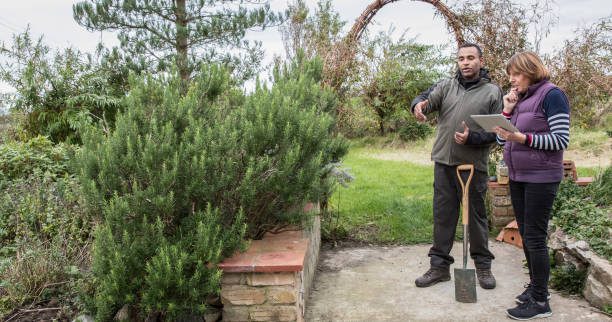
| Horticulturalist Key Stats | |
|---|---|
| Avg. Salary / year | $28,970 |
| Avg. Pay / hour | $13.93 |
| Education | 4+ Years |
| Job Outlook | -0.8% |
Horticulturalists specialize in planting and growing a variety of plants on a grand scale.
They go above and beyond your backyard personal gardening and use their skills and green thumb to grow large amounts of plants for general use.
People who already know that they want to become a Horticulturalist have a knack for working with gardening, nature and agriculture.
Horticulturists can work in a variety of positions that include office work, education and hands on plant growing.
The types of vegetation Horticulturalists plant, grow and educate on can include:
- Vegetables
- Fruits
- Ornamental plants
- Flowers
Horticulturalists can work with a wide range of plants from the exotic and rare to the common and well known flowers and plants.
They have an understanding of the climates and environments that produce strong and healthy and flourishing vegetation.
For more information regarding the industry and ways to get involved, visit the American Society for Horticultural Science at ASHS.
This website provides a wide range of information regarding jobs, careers, membership, publications, and conferences for professionals and students.
Table of Contents
Education Requirements to Become a Horticulturalist
In order to become a Horticulturalist, candidates must have thorough knowledge regarding plant life, growth and maintenance.
Most Horticulturalist jobs entail having continued education either by completing an Associate’s, Bachelor’s or Doctoral degree.
Candidates who want to perform research in this field must complete a doctoral program.
In addition, the ASHS foundation offers certification that can help strengthen a candidate’s background.
The majority of positions that promote product development require candidates to have a Bachelor’s degree.
In order to become a Horticulturalist, candidates should major in Agricultural Science or Horticulture, if available, as an undergrad in college.
Those who want to pursue a doctoral degree can specialize in an Agricultural science such as Horticulture.
Other advanced degrees available include Genetics, Crop Science or Animal Breeding.
Horticulturalist Job Description
A Horticulturalist is an experienced professional who prepares soil for plant cultivation, plants seeds for new plants and maintains and observes a plant’s growth.
A Horticulturalist can cultivate a variety of plants for a variety of purposes.
They can grow flowers, vegetables or fruits for consumption as well as for decoration purposes.
Horticulturalists are also responsible for determining new ways to increase the production of crops.
This may come from the extensive demand due to population growth.
In addition, Horticulturalists are expected to cultivate plants and vegetation that is high in quality, provides better nutrition and resistant to harmful surroundings such as insects or disease.
Horticulturalists are also expected to fulfill their responsibilities in a cost effective way and in a manner that is efficient yet doesn’t harm the environment.
These professionals find ways to cultivate the highest quality vegetation under limiting circumstances such as environmental and cost effective requirements.
In addition to finding more efficient ways to cultivate vegetation, some other aspects of this career include finding competent and effective ways to harvest, process, package and deliver products (plants) that can withstand a lot of movement in shipment loads.
Horticulturalists work for a wide range of employers including the government, private nurseries, greenhouses or private industries.
Their specific job duties also depends the type of position candidates seek.
Horticulturalists may also work in an office setting, laboratories, greenhouses or providing hands on work out in the field.
Some candidates may also find positions in Landscaping, Engineering for crop systems, researching or as crop inspectors.
Horticulturalist Salary and Career Path
The job outlook for the agricultural and food science industry looks strong due to a focus on using new technology and biotechnology to grow and develop new food products.
Also helping this growth is the shift in perspective regarding agriculture’s negative effect on the environment.
Consumers are more willing to buy products whose growth isn’t detrimental to the environment.
This shift in perspective has put pressure on the agricultural industry to come up with new ways to grow and develop food processes.
The national median wage for all food scientists and technologists, which include Horticulturalists, was approximately $59,500 per year.
The salary range for all related careers in this field was $34,000 to $105,000 in 2008.
![]() The below information is based on the 2021 BLS national averages.
The below information is based on the 2021 BLS national averages.
National Average Salary
$35,240Average Salary by State
| State | Avg. Annual Salary |
|---|---|
| Alabama | $28,970 |
| Alaska | $40,700 |
| Arizona | $33,880 |
| Arkansas | $28,870 |
| California | $40,260 |
| Colorado | $39,710 |
| Connecticut | $41,030 |
| Delaware | $33,540 |
| District of Columbia | $46,780 |
| Florida | $31,710 |
| Georgia | $32,550 |
| Hawaii | $38,750 |
| Idaho | $33,810 |
| Illinois | $35,110 |
| Indiana | $33,420 |
| Iowa | $32,600 |
| Kansas | $32,880 |
| Kentucky | $30,540 |
| Louisiana | $30,030 |
| Maine | $37,590 |
| Maryland | $37,070 |
| Massachusetts | $42,890 |
| Michigan | $33,930 |
| Minnesota | $38,330 |
| Mississippi | $28,120 |
| Missouri | $33,010 |
| Montana | $35,810 |
| Nebraska | $33,440 |
| Nevada | $34,300 |
| New Hampshire | $37,610 |
| New Jersey | $38,140 |
| New Mexico | $32,760 |
| New York | $40,340 |
| North Carolina | $32,340 |
| North Dakota | $36,880 |
| Ohio | $33,430 |
| Oklahoma | $31,030 |
| Oregon | $38,490 |
| Pennsylvania | $34,410 |
| Rhode Island | $40,490 |
| South Carolina | $31,170 |
| South Dakota | $31,840 |
| Tennessee | $31,760 |
| Texas | $32,090 |
| Utah | $34,740 |
| Vermont | $41,350 |
| Virginia | $32,990 |
| Washington | $42,020 |
| West Virginia | $27,760 |
| Wisconsin | $34,550 |
| Wyoming | $35,500 |
| Guam | $22,350 |
| Puerto Rico | $19,710 |
| Virgin Islands | $32,940 |
The top earning state in the field is District of Columbia, where the average salary is $46,780.
These are the top 5 earning states in the field:
* Employment conditions in your area may vary.
Frequently Asked Questions
What does a horticulturalist do?
A horticulturalist is a specialist who uses his or her knowledge to cultivate and propagate various plants and provide technical information to farmers, as well as vegetable, fruit and flower growers.
Horticulturalists can work in different spheres; some professionals might be conducting investigations to create plants that are more resistant to diseases; some horticulturalists create gardens, parks, and recreational areas, while others work in the mining industry and assist in regenerating degraded land.
The responsibilities of a horticulturalist would certainly differ, depending on the sphere where the specialist is working.
The professionals that work in experimentation and research engage in plant research, learn about plant evolution and development under various conditions.
The administrative type of the work of a horticulturalist might include making sure that their place of work is in accordance with certain policies and standards, and so on.
How much do horticulturalists make?
On average, a horticulturalist can make a little more than $67.500 per year in the United States.
In case you decide to follow this career path, you can expect to earn anywhere between $35.000 and $129.500 annually.
The salary would certainly depend on a variety of factors – your education and experience level, the employer, the location and so on.
The horticulturalists that work in California, North Carolina, and Minnesota, for example, have the highest average salaries.
An entry-level horticulturalist can earn $17 per hour, while a specialist with plenty of experience will make $62 and more.
How much does it cost to become a horticulturalist?
You would, in most cases, need a bachelor’s degree in soil science, plant science or a related field, in order to become a horticulturalist.
A year in a university can cost you anywhere between $8.000 and $45.000 (and more); the cost depends on a variety of factors (the books, supplies, and accommodation expenses are not included).
Most governmental and private employers will prefer you to have a master’s degree (over $11.000).
What is the demand for horticulturalists?
Between 2016 and 2026, the holticulturalist job market is expected to shrink by 0.8%, according to the Bureau of Labor Statistics.
That is a lot slower than the national average for all occupations in the United States.
The candidates that hold a master’s degree will have better job prospects.
Bear in mind that the industry is mainly concentrated in Texas, Illinois, and California.
How long does it take to become a horticulturalist?
It will take you 4 years to obtain a bachelor’s degree and another 2 years to earn a master’s degree.
Business and finance management courses can be helpful as after gaining some experience, horticulturalists can be asked to move to managerial positions.
There are a lot of courses available both online and offline that can fit any budget; some last for a couple of weeks, while others can take you a few semesters to complete.













